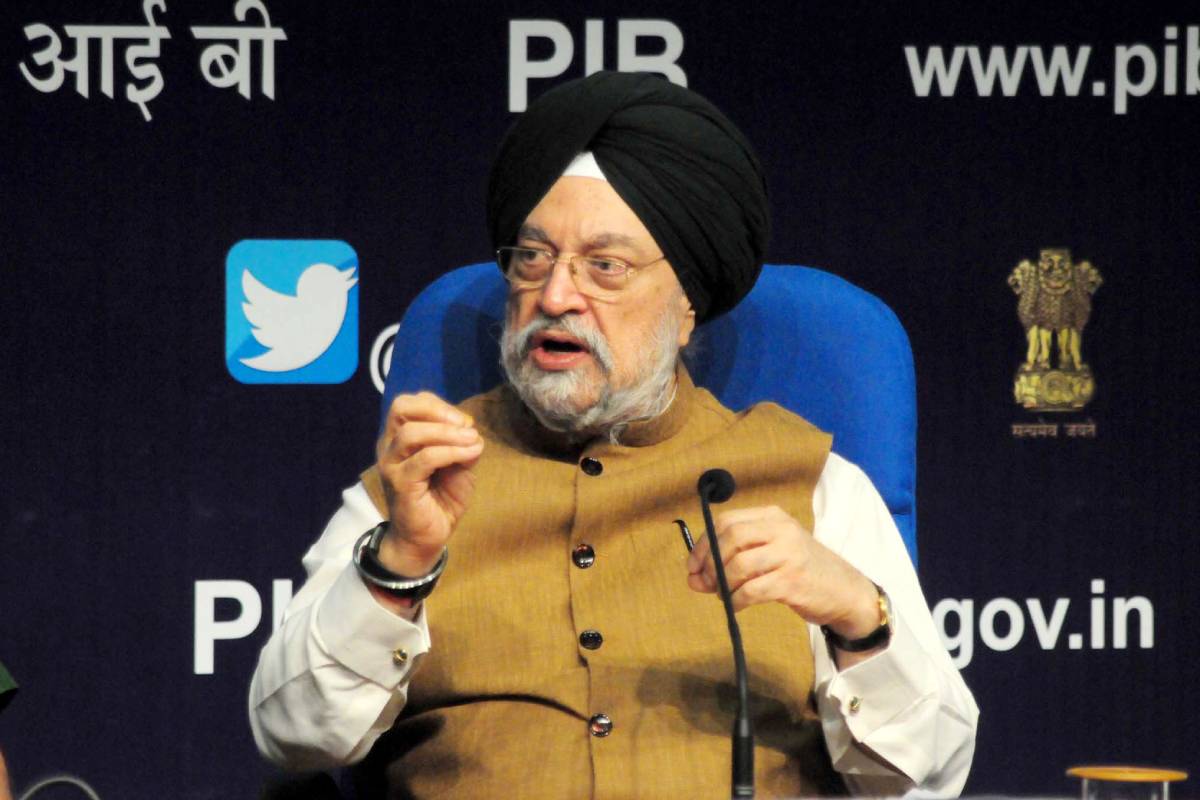Delhi-Ghaziabad-Meerut Regional Rapid Transit System (RRTS) Corridor, once fully operational, will cut the travel time between Delhi and Meerut to around 50-55 minutes from the present three hours by travelling through road, Union Minister of Petroleum & Natural Gas and Housing & Urban Affairs Hardeep Singh Puri said on Friday.
Talking to reporters, Puri said the corridor is one of the high-speed connectivity between cities.
“The distance between Delhi and Meerut is normally covered in current traffic conditions in three hours. When this Corridor is ready, the distance will be covered in 50-55 minutes. So it’s a very major development,” he said.
“India will have the world’s second-largest operational urban transport metro system, bigger even than the United States. And as the economy grows, you’d find that the urban space, the investment in the urban space, the facilities, amenities for our citizens, all that will grow and increase with the growth in the size of the GDP,” Puri said.
Earlier in the day, the first Namo Bharat train on a 17-km stretch of the Delhi-Meerut Regional Rapid Transit System (RRTS) was flagged off on Friday by Prime Minister Narendra Modi at Sahibabad RapidX Station in Ghaziabad in Uttar Pradesh.
Modi flagged off the Namo Bharat RapidX train connecting Sahibabad to Duhai Depot, marking the launch of the Regional Rapid Transit System (RRTS) in India. On the occasion, Puri announced that the trains of the RRTS would be known as ‘Namo Bharat’.
The PM travelled by Regional Rapid Train ‘Namo Bharat’ with co-passengers who shared their experiences, including on how this train service will have a positive impact.
The 17-km priority section of the Delhi-Ghaziabad-Meerut RRTS corridor, inaugurated by Modi, will connect Sahibabad to ‘Duhai Depot’ with stations at Ghaziabad, Guldhar and Duhai on the way. The foundation stone for the Delhi-Ghaziabad-Meerut corridor was laid by Modi on March 8, 2019.
The priority section between Sahibabad and Duhai Depot will be available for passenger operations from Saturday, i.e., October 21. The entire corridor is expected to be operational by June 2025.
India’s first Regional Rapid Transit System (RRTS), which was launched by Modi, has several unique features in terms of passenger ease and is focused on multi-nodal connectivity.
With an operational speed of 160 kmph, these fully-air conditioned trains will have a host of commuter-centric features for a safe and comfortable regional commute like ergonomically designed 2×2 transverse seating, wide standing space, luggage racks, CCTV cameras, laptop/mobile charging facility, dynamic route maps, auto control ambient lighting system, Heating Ventilation and Air Conditioning System (HVAC) and other amenities.
The trains will be operational between 6 am to 11 pm.
To begin with, a train will be available every 15 minutes, though the system can further increase the frequency on a requirement basis.
According to the National Capital Region Transport Corporation (NCRTC), the ticket fare for the priority section between Sahibabad to Duhai depot is Rs 50 for Standard Class while for the Premium class, the ticket will cost Rs 100.
Every train has six coaches with a capacity to carry about 1,700 commuters, including both seating and standing space, for the commuters. There are 72 seats available per standard coach and 62 seats in the premium coach.
One coach in every train is reserved for women, it is the coach next to the premium coach. Also, seats are reserved in the other coaches for the specially-abled and senior citizens.
Each train will have one ‘premium coach’ with a host of additional commuter-centric features like reclining seats, coat hooks, magazine holders and footrests. The first coach moving towards Meerut from Delhi and the last coach moving towards Delhi from Meerut will be the premium coach.
Entry to the premium coach will be accessible only through a premium lounge made at the platform level. Equipped with comfortable cushioned seats, it will have the facility of a vending machine from where snacks or drinks can be bought, the spokesperson said.
In every train, an attendant will be deputed who will play an important role in acquainting the commuters with the facilities available on the train and ensuring their safe and secure commute. The attendant will be stationed in the premium coach and assist the commuters in need.
Ticketing options available for commuters include paper QR code-based journey ticket, ticket vending machine, National Common Mobility Card (NCMC) Card and digital QR code-based ticket through NCRTC mobile application, ‘RAPIDX Connect’.
To facilitate smooth travel in the RAPIDX trains, a designated space for wheelchairs and stretchers has been provided in the last coach of the train.
“Multi-modal integration is the guiding principle of the RRTS project being implemented by NCRTC. To facilitate this, RRTS stations have been strategically planned in such a way that they can be built as close as possible to the existing modes of public transport,” the spokesperson said.
Eight RRTS corridors have been identified to be developed in NCR, out of which three corridors have been prioritised to be implemented in Phase-I, including Delhi – Ghaziabad – Meerut Corridor; Delhi – Gurugram – SNB – Alwar Corridor; and Delhi – Panipat Corridor.
The Delhi-Ghaziabad-Meerut RRTS being developed at a cost of more than Rs 30,000 crore will connect Delhi to Meerut in less than an hour of travel time going through the urban centres of Ghaziabad, Muradnagar, and Modinagar.
In line with the PM GatiShakti National Master Plan, the RRTS network will have extensive multi-modal integration with railway stations, metro stations and bus services. Such transformative regional mobility solutions will boost economic activity in the region; provide improved access to employment, education and healthcare opportunities; and help in the significant reduction of vehicular congestion and air pollution.












